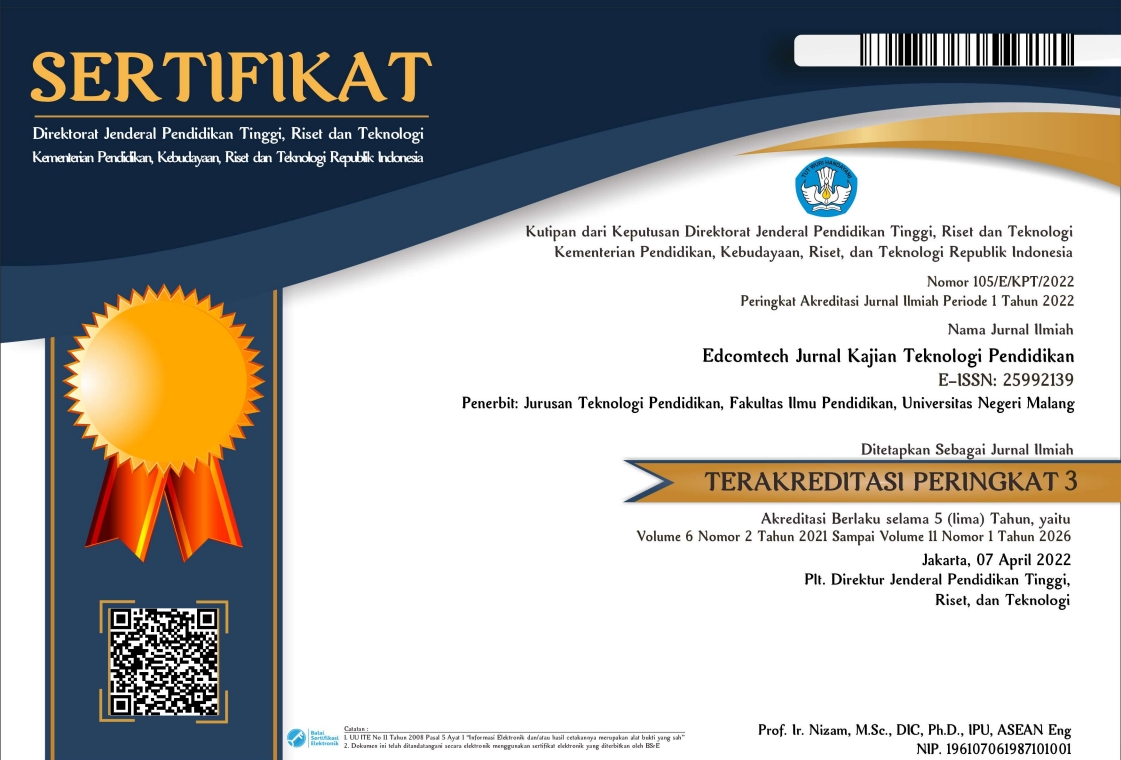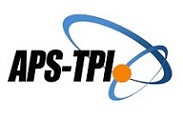Analisis Kebutuhan Pengembangan Perangkat Lunak Pada Pembelajaran Bahasa Inggris untuk Mengatasi Masalah Pelafalan
Abstract
Abstrak: Penelitian ini bertujuan untuk menelaah kebutuhan pebelajar Bahasa Inggris di Indonesia terhadap aspek pelafalan sebagai tolak ukur pengembangan perangkat lunak pembelajaran pelafalan Bahasa Inggris. Penelitian ini menggunakan metode analisis deskriptif yang mengkaji dan mengamati penelitian-penelitian terdahulu mengenai permasalahan pelafalan yang dialami pebelajar dari berbagai daerah di Indonesia. Hasil kajian literatur menunjukkan masih banyak terdapat kesalahan-kesalahan pelafalan yang cenderung terjadi karena absensi dari bunyi Bahasa Inggris dalam Bahasa Ibunya. Hal tersebut juga menghasilkan beberapa pola kesalahan yang dialami para pebelajar. Hasil penelitian menyimpulkan bahwa pebelajar EFL membutuhkan perangkat lunak pembantu untuk mengatasi permasalahan pelafalan Bahasa Inggris yang dapat mendeskripsikan kecenderungan kesalahan pelafalan serta aspek segmental tiap bunyi bahasa Inggris.
Abstract: This study aims to examine the needs of EFL learners in Indonesia towards Pronunciation as a focus point of the development of English pronunciation learning software. This research uses descriptive analysis which analyzes and observes previous studies regarding the pronunciation problems experienced by students from various regions in Indonesia. The literature review shows that there are still many pronunciation errors that are often associated with the absence of an English sound in their mother tongue. This has also emerged several patterns of errors experienced by students. The result deduces that EFL learners need the supporting software to cope with the pronunciation problems that can describe the potential pronunciation errors and segmental aspect of each English sound.
Keywords
Full Text:
PDFReferences
Andi-Pallawa, B., & Alam, A. F. A. (2013). A comparative analysis between English and Indonesian phonological systems. International Journal of English Language Education, 1(3), 103–129. https://doi.org/doi:10.5296/ijele.v1i3.3892
Andriani, P. F., Padmadewi, N. N., & Budasi, I. G. (2018). Promoting autonomous learning in English through the implementation of Content and Language Integrated Learning (CLIL) in science and maths subjects. SHS Web of Conferences, 42, 74.
Bauman-Waengler, J. (2020). Articulation and phonology in speech sound disorders. In Ocean View School District, Oxnard, California.
Faathir, F. (2018). Pronunciation Problems of Munanese as EFL Learners. SETALI, 228–232.
Gürsoy, E. (2011). The Critical Period Hypothesis Revisited: The Implications for Current Foreign Language Teaching to Young Learners. Journal of Language Teaching & Research, 2(4). https://doi.org/doi:10.4304/jltr.2.4.757-762
Habibi, M. W. (2016). English pronunciation problems encountered by Indonesian advanced students. Universitas Islam Negeri Maulana Malik Ibrahim. http://etheses.uin-malang.ac.id/id/eprint/4094
Hasanah, M. (2006). Model Nativis Language Acquisition Device (Sebuah Teori Pemerolehan Bahasa). LiNGUA: Jurnal Ilmu Bahasa Dan Sastra, 1(2). https://doi.org/https://doi.org/10.18860/ling.v1i2.549
Jalal, A. (2011). Pronunciation problems among Saudi learners: A case study at the preparatory year program. Language in India: Strength for Today and Bright Hope for Tomorrow, 11, 22–36.
Keating, P. (2018). The International Phonetic Alphabet. Linguistics.Ucla.Edu. https://linguistics.ucla.edu/people/keating/IPA/IPA_Kiel_2018_full.pdf
Kétyi, A. (2013). Using smart phones in language learning–A pilot study to turn CALL into MALL. L. Bradley & S. Thouësny (Eds.), 20, 129–134.
Kim, H., & Kwon, Y. (2012). Exploring smartphone applications for effective mobile-assisted language learning. Multimedia-Assisted Language Learning, 15(1), 31–57.
Komariah, A. (2018). Problems in pronouncing the English sounds faced by the students of SMPN 2 Halong, Banjar. Journal of English Language and Pedagogy, 1(2). https://doi.org/https://doi.org/10.36597/jelp.v1i2.4127
Kröger, B. J., Birkholz, P., Hoffmann, R., & Meng, H. (2010). Audiovisual tools for phonetic and articulatory visualization in computer-aided pronunciation training. Development of Multimodal Interfaces: Active Listening and Synchrony, 337–345. https://doi.org/10.1007/978-3-642-12397-9_29
Kruk, M. (2017). A look at the advanced learners’ use of mobile devices for English language study: Insights from interview data. The EuroCALL Review, 25(2), 18–28. https://doi.org/10.4995/eurocall.2017.7461
Liang, D. (2015). Chinese learners’ pronunciation problems and listening difficulties in English connected speech. Asian Social Science, 11(16), 98. https://doi.org/http://dx.doi.org/10.5539/ass.v11n16p98
Mathew, I. (2003). Errors in pronunciation of consonants by learners of English as a foreign language whose first languages are Indonesian, Gayo and Acehnese. Monash University Linguistics Papers, 3(2), 29–44.
Peng, X., Chen, H., Wang, L., & Wang, H. (2018). Evaluating a 3-D virtual talking head on pronunciation learning. International Journal of Human-Computer Studies, 109, 26–40. https://doi.org/https://doi.org/10.1016/j.ijhcs.2017.08.001
Praherdhiono, H., Setyosari, P., Degeng, I. N. S., Slamet, T. I., Surahman, E., Adi, E. P., Degeng, M. D. K., & Abidin, Z. (2019). Teori dan Implementasi Teknologi Pendidikan: Era Belajar Abad 21 dan Revolusi Industri 4.0. Seribu Bintang.
Ramamuruthy, V., & Rao, S. (2015). Smartphones promote autonomous learning in ESL classrooms. Malaysian Online Journal of Educational Technology, 3(4), 23–35.
Rosell-Aguilar, F. (2018). Autonomous language learning through a mobile application: a user evaluation of the busuu app. Computer Assisted Language Learning, 31(8), 854–881. https://doi.org/https://doi.org/10.1080/09588221.2018.1456465
Trubetzkoy, N. S. (1969). Principles of phonology.
Ulfa, S., Surahman, E., & Octaviani, H. I. (2020). Mobile Seamless Language Learning Framework to Improving Students’ Speaking Skills for Junior High Students during Pandemic Convid-19: A Case Study in Indonesian Context. 1st International Conference on Information Technology and Education (ICITE 2020), 497–500.
Umantari, P. I. M., Laksminy, L. P., & Putra, K. S. (2016). Pronunciation Problems of English Consonants Encountered by Senior High School Students of SMAN 1 Tabanan. Jurnal Humanis, Fakultas Ilmu Budaya Unud, 10(2), 228–234.
Vanhove, J. (2013). The critical period hypothesis in second language acquisition: A statistical critique and a reanalysis. PloS One, 8(7), e69172. https://doi.org/https://doi.org/10.1371/journal.pone.0102922
Wang, W. S.-Y. (2018). Critical periods for language. Comment on" Rethinking foundations of language from a multidisciplinary perspective". Physics of Life Reviews, 26, 179–183. https://doi.org/10.1016/j.plrev.2018.09.002
Wang, X., Hueber, T., & Badin, P. (2014). On the use of an articulatory talking head for second language pronunciation training: the case of Chinese learners of French. 10th International Seminar on Speech Production (Issp 2014), 449–452.
Wermke, K., Ruan, Y., Feng, Y., Dobnig, D., Stephan, S., Wermke, P., Ma, L., Chang, H., Liu, Y., & Hesse, V. (2017). Fundamental frequency variation in crying of Mandarin and German neonates. Journal of Voice, 31(2), 255-e25. https://doi.org/https://doi.org/10.1016/j.jvoice.2016.06.009
DOI: http://dx.doi.org/10.17977/um039v7i12022p001
Refbacks
- There are currently no refbacks.
Copyright (c) 2022 Faathir .

This work is licensed under a Creative Commons Attribution-ShareAlike 4.0 International License.
Edcomtech: Jurnal Kajian Teknologi Pendidikan published by Department of Educational Technology, Faculty of Education, State University of Malang in Collaboration with Asosiasi Program Studi Teknologi Pendidikan Indonesia (APS TPI) and Ikatan Profesi Teknologi Pendidikan Indonesia (IPTPI) with MoU.
Publisher Address:
Lab. Teknologi Pendidikan, Gd.E2, Lt.1
Fakultas Ilmu Pendidikan Universitas Negeri Malang
Jalan Semarang No 5, Kota Malang Kode Pos 65145
Email: edcomtech.fip@um.ac.id
========================================================================================================
| INDEXED BY | TOOLS | PLAGIARISM CHECK | ARTICLE TEMPLATE |
|

Edcomtech is licensed under a Creative Commons Attribution-ShareAlike 4.0 International License.
Edcomtech Statistics (Since July 13th, 2020)












1.png)








